Buddha's birthplace faces serious air pollution threat
- Published
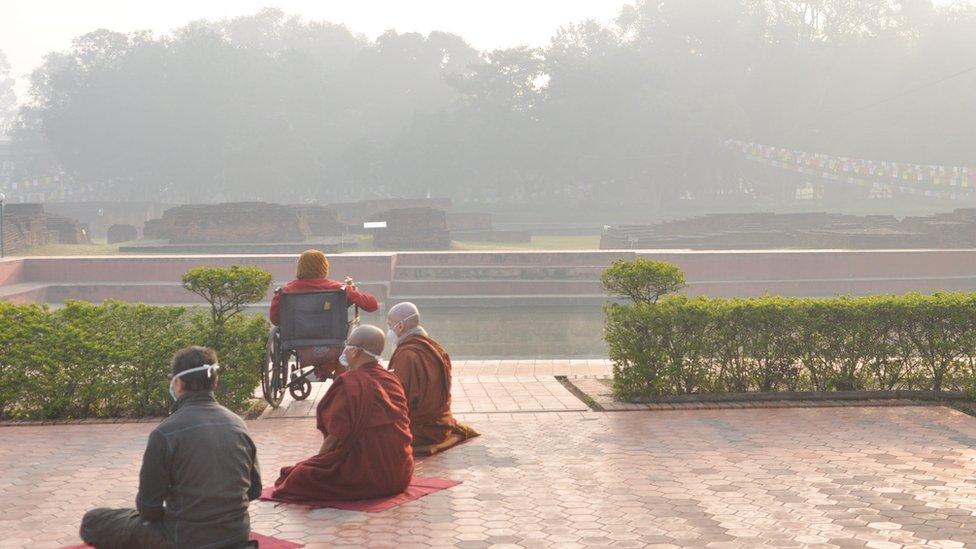
Monks put on masks to protect themselves from pollution in Lumbini
The historic site of Buddha's birthplace in Nepal faces a serious threat from air pollution, scientists and officials have warned.
Recent data collected from air quality monitoring stations in five places across the country show Lumbini is highly polluted.
The warnings have come amid expanding industrialisation near the sacred site.
It is already located in a pollution hotspot on the Gangetic plains.
For the month of January, fine particulate matter (PM2.5) in Lumbini, in southwest Nepal, was measured at 173.035 micrograms per cubic metre.
The reading for the neighbouring town of Chitwan was 113.32 and the capital, Kathmandu, which is known for its high pollution levels, was at 109.82.
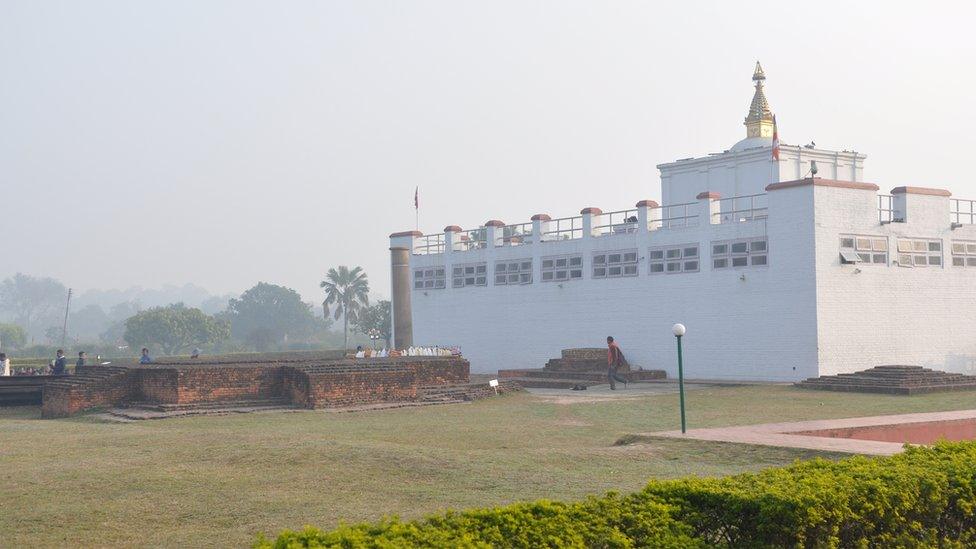
Scientific studies have warned that rising air pollution threatens the historic artefacts of Buddha's birthplace
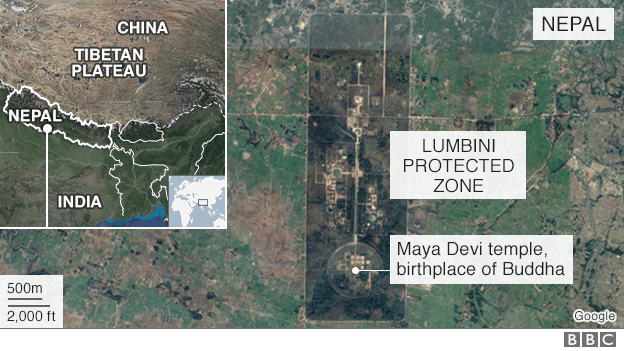
The World Health Organization (WHO) safe limit for the pollutant is 25 micrograms per cubic metre and the Nepal government has set the national standard at 40.
Scientific studies have also highlighted the increasing levels of pollution in and around the historic site.
"The combined effect of trans-boundary transport from the pollution rich Indo-Gangetic Plain region and trapped local industrial pollution due to temperature inversion is responsible for severe winter pollution," says a study done by the Indian Institute of Tropical Meteorology in collaboration with the WHO.
"For other seasons, local emissions are largely responsible for bad air quality."
It found that levels of PM 2.5 fine particles, which can enter human blood vessels, were more than 10 times above the WHO safe limit.
Another study conducted by the IUCN and Unesco found that the pollution had begun to threaten the Lumbini World Heritage site.
"The expansion of the carbon emission industries within the Lumbini Protected Zone has caused several problems such as threats to biodiversity, health hazards to local residents, archaeological properties, social and cultural values."
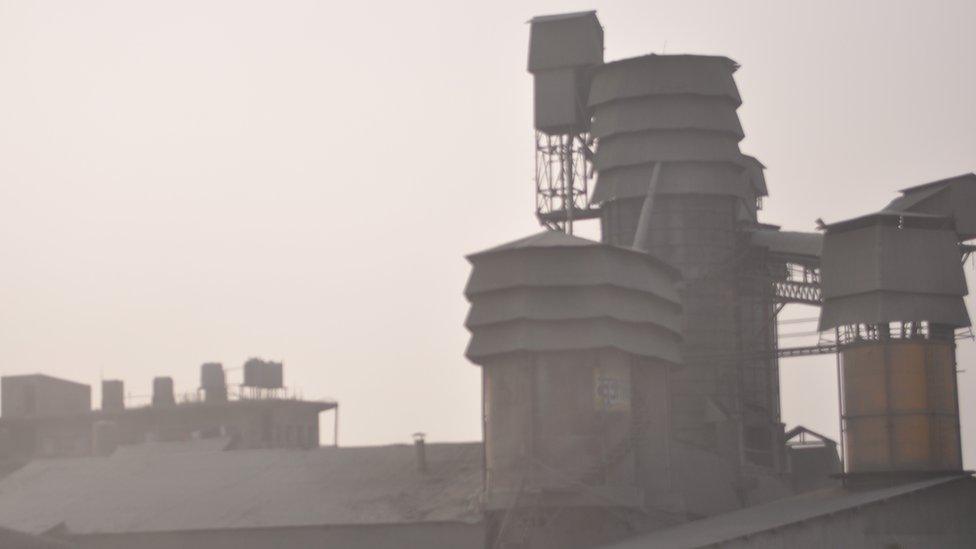
Cement factories like these near Lumbini are said to be one of the major sources of pollution
An IUCN study on three monuments of the historic site concluded that the sacred garden - the core place - was polluted by air dispersed gaseous and solid compounds.
"On the samples of the Ashoka pillar (that was established in 249 BC by Emperor Ashoka to mark the birthplace of Buddha) gypsum, calcite, dolomite and magnesite are present in the form of fine powder that deposits on the surface," says the report authored by Italian archaeologist Constantino Meucci of the University of Rome.
"All compounds are part of the cement production cycle."
Buddhist monks must wear masks to pray
A government body had designated 15km aerial distance from the north east and west boundary of the historic site as the Lumbini Protected Zone.
Adjoining the LPZ is an expanding industrial corridor that has cement, steel, paper and noodle factories and brick kilns.
Several of these factories are well within the LPZ and environmentalists say that is in clear violation of the government regulation.
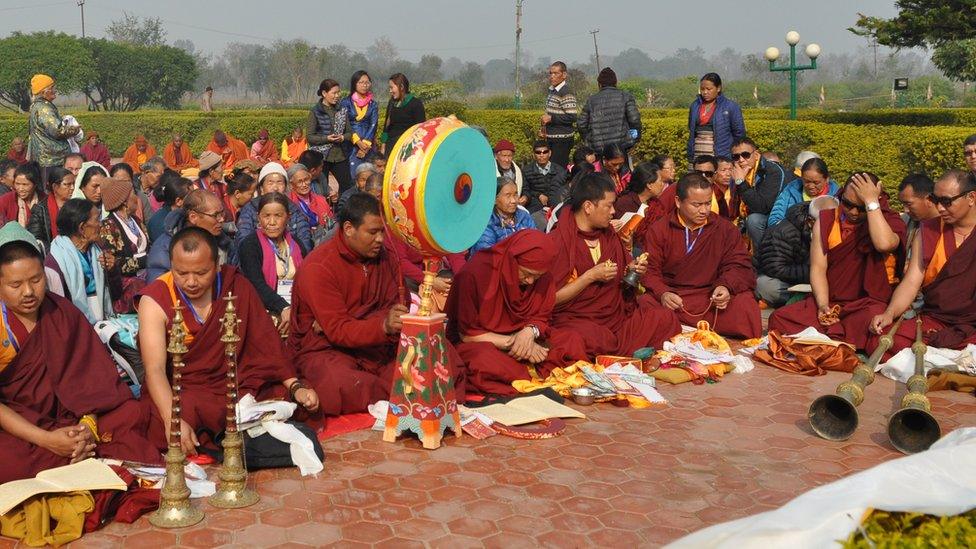
Lumbini is a major pilgrimage for Buddhists from all around the world
Tourists and monks visiting the site have told the BBC they felt uneasy while breathing in the air.
"At times I have difficulty in breathing properly and I have to cough," said Monk Vivekananda who runs an international meditation centre in Lumbini.
He and a few others were meditating with their face masks on near the Mayadevi temple that marks the exact spot where Gautam Buddha was born more than 2,600 years ago.
"We had at our meditation centre certain [people] who have had asthma conditions and during their stay here in Lumbini, it has badly affected them," he told the BBC.
"In at least three cases, [they] had to cut their retreat short and go back because they could not tolerate the conditions here any more."
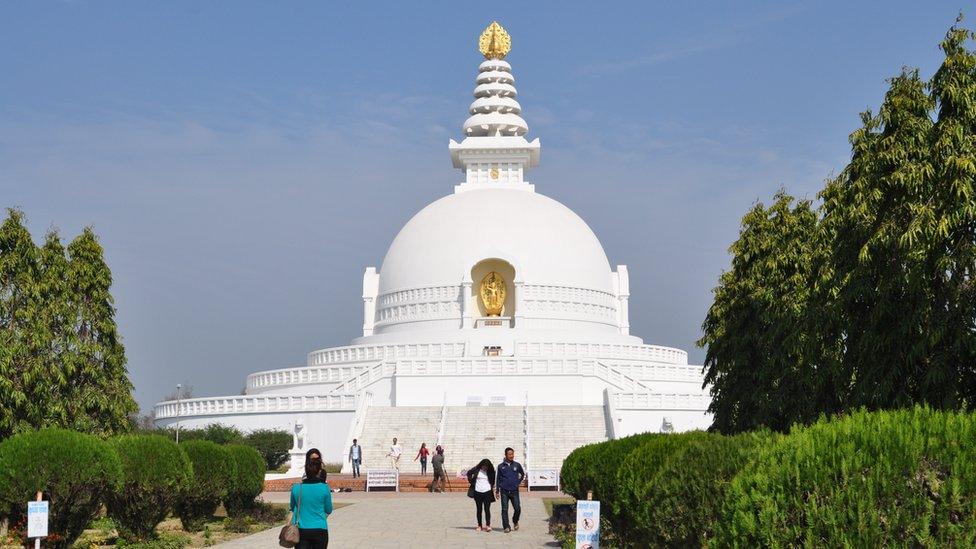
The government wants to develop Lumbini as a major tourism destination
Health workers in the area said the conditions were getting worse.
"When the wind brings more pollution, we see many monks meditating here with their masks on," said Shankar Gautam, who has just retired after working as a health official for 30 years.
"Studies have shown that in the past 10 years the number of people with lung related diseases has gone up.
"The dust coming in here has also led to a huge increase in skin-related diseases."
A major pilgrimage for Buddhists, Lumbini is also a major tourist destination.
Last year it saw one million visitors and the government plans to develop it as a global tourism destination.
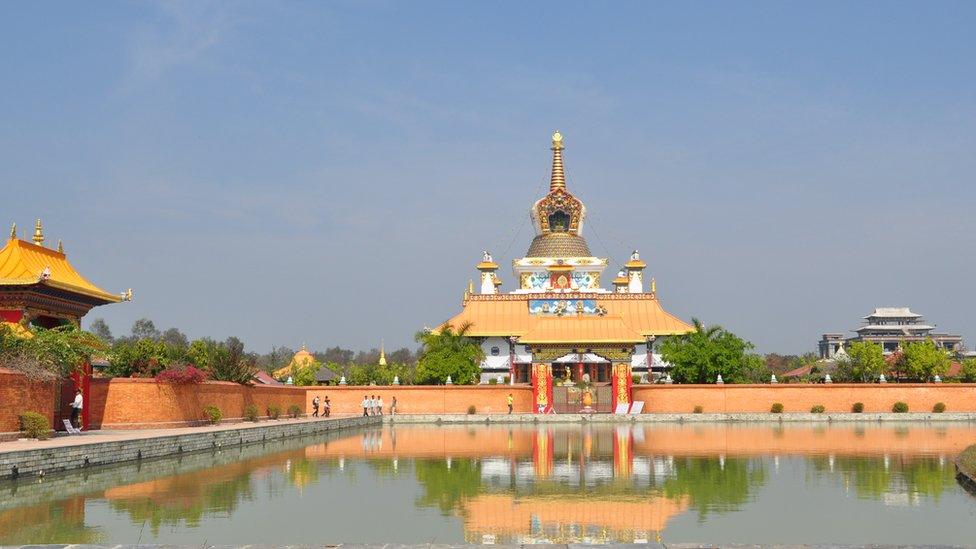
Several countries with significant Buddhist populations have built temples and stupas in Lumbini
"My feeling at this time is that it is more polluted than seven or eight years ago," said Nguyen Duy Nhan, a Vietnamese tourist.
"I can see a lot of dust on the leaves and trees on the way we were coming in here."
His friend Victor Vlodovych nodded in agreement and said: "Maybe if I stay longer it will affect [me] a lot, I can feel that there is a lot of construction and manufacturing around [this place]."
Factory operators say they are reasonably far away from the sacred site.
"Yes certainly this is very near to the birthplace of Lord Gautam Buddha," admitted Ajay Ajad, a manager with the biggest cement factory in the area.
"Obviously cement factories emit some dust but we are at a reasonably safe distance and therefore the deposition of our dust particles on the sacred site is minimised.
He says dust is not a problem confined to Lumbini: "It is all over Nepal and even at places where there are no cement factories."
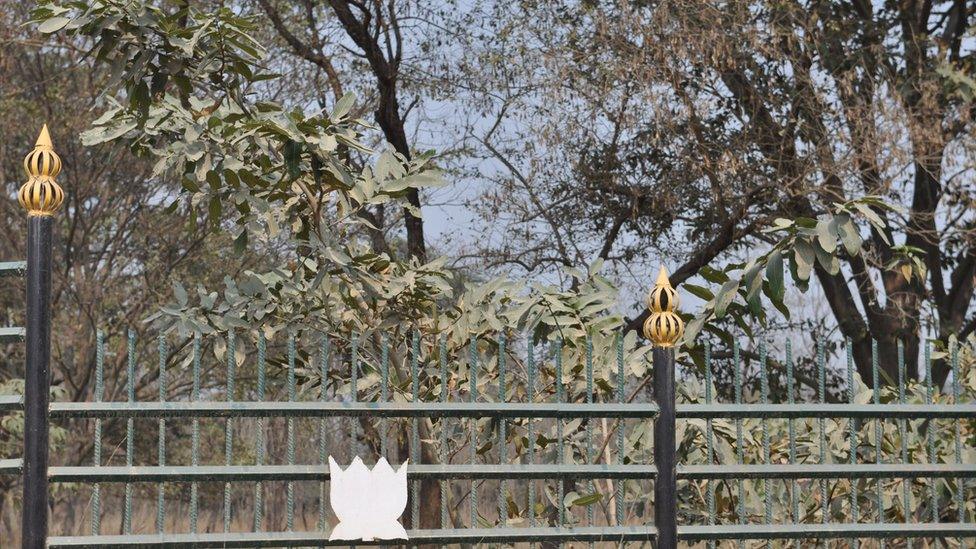
Vegetation in and around Lumbini is covered in dust
Government officials are aware of the problem.
"Based on recent data, we know that Lumbini is more polluted than Kathmandu," said Shankar Prasad Poudel, chief of the air pollution measurement section at the environment department.
"We plan to detect the sources of the pollution using a drone in the near future and hopefully this will help minimise the problem."